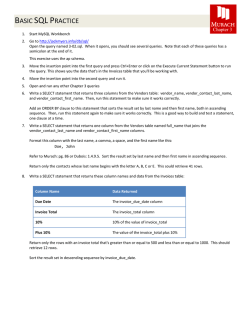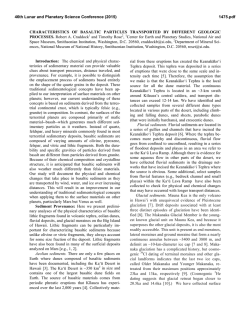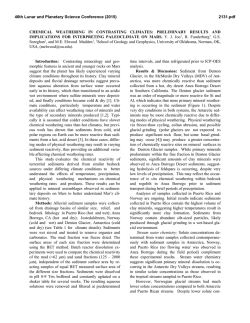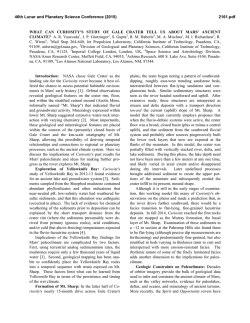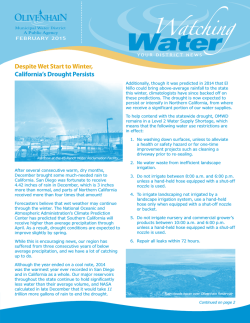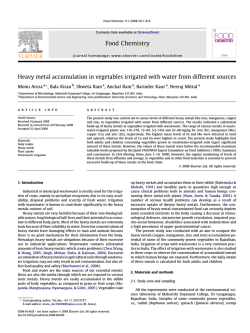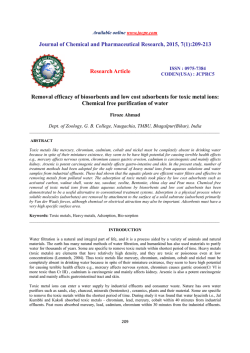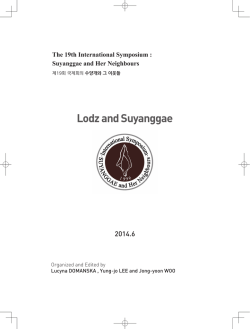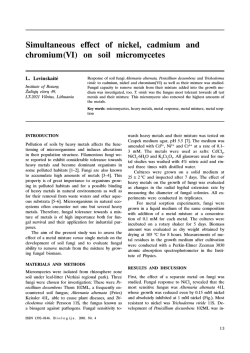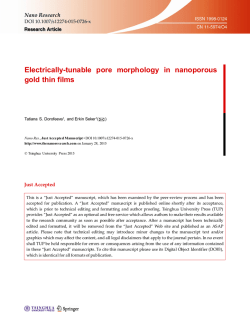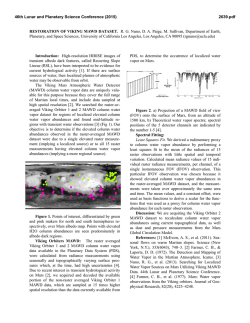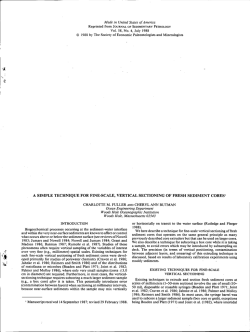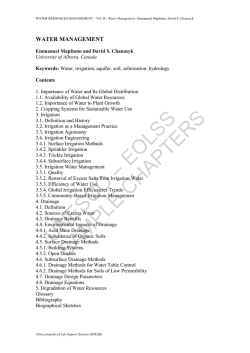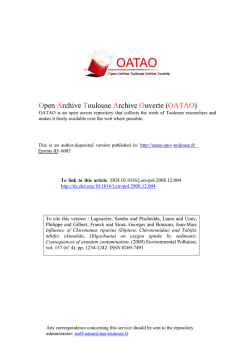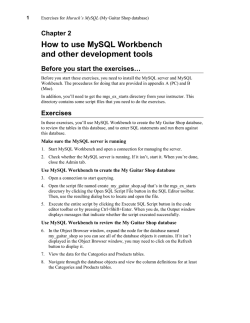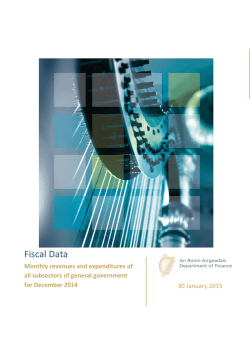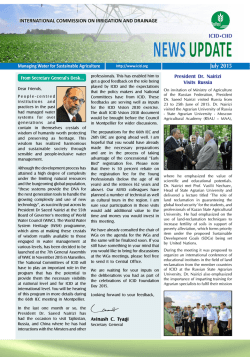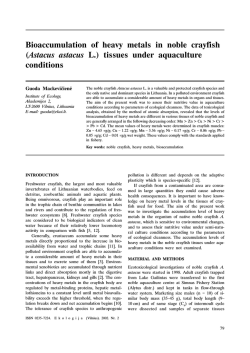
Ia~ ~ ., . /t..UC. - Woods Hole Oceanographic Institution
WHOI-85-18 Transport of Trace Metals in Nearshore Seditnents William R. Martin Woods Hole Oceanographic Institution Woods Hole, Mass~chusetts 02543 and The Massachusetts Institute of Technology Cambridge, Massachusetts 02139 Apri11985 Doctoral Dissertation Funding was provided by the National Science Foundation under grant Number OCE 82-16425; and the Department of Commerce NOAA, National Sea Grant college program, under grant Number NA80-AA-D-.00077 (R/P/7). Reproduction in whole or in part is permitted for any purpose of the United States Government. This thesis should be cited as: William R. Martin, 1985. Transport of Trace Metals in Nearshore Sediments. Ph.D. Thesis. MIT/WHOI, WHOI-85-18. Approved for publication; distribution unlimited. Approved for Distribution: ' n, f hairman emistry Ia~h8.r~es.,I>. ROiSter ./t..U-C. Dean of Graduate Studies l ABSTRACT The focus of this thesis is on rates of transport of metals both across the sediment/water interface and within the sediment column of nearshore sediments. The early diagenesis of several first-row transition metals exhibiting a variety of behaviors in the ocean -- Mn, Fe, Co, Ni, and Cu -- has been studied intensively at a site in Buzzards Bay, Mass. By limiting the study to a single site, independent measurements over the seasonal cycle of the concentrations of the metals in pore water, of the pore water constituents important to metal cycling, and of particle and solute transport rates could be made at the same site. In addition, a direct, in situ study of the interaction of chemical and transport processes-was-undertaken using radiotracer techniques. Thus, the study emphasizes the mechanisms of metal cycling near the interface of nearshore sediments. Transport rates were estimated using excess 234 Th distributions for particle transport, and pore water 222 Rn deficit distributions for solute transport. Particle transport rates, modeled by analogy to Fickian diffusion, ranged from 7-BOxlo-s cm 2 /sec, with excess 214 Th reaching to 2-2.5 em below the interface. There was a significant seasonal variation in rates, with a warm-season average of 40xlo-s cm 2 /sec and a cold-season averag~ of 20xlo-a cm 2 /sec. 234 Th-derived mixing rates were applied to Mn distributions through a mass balance model of Mn cycling. It was found that a particulate flui due to bioturbation, from the net dissolved Mn removal layer to a net dissolved Mn production layer ajdacent to the interface, was as large as 38% of net dissolved Mn production. Mixing of particulate Fe sulfides may have a similar importance for Fe cycling. Solute transport was estimated using measured 222 Rn/ 226 Ra disequilibrium. The pore water 222 Rn deficit could be explained using a model including vertical molecular diffusion and exchange with overlying seawater via exchange of pore water with bottom water in rapidly flushed burrows. Cores taken in all seasons could be split into three groups: (1) December through March: the 222 Rn deficit was explained by vertical molecular diffusion alone; (2) early summer (June>: irrigation affected the 222 Rn profile to a depth of at least 20 em; (3) late summer/fall: irrigation was still important near the interface, affecting 222 Rn profiles to depths of 10-12 em. 222 Rn deficits were adequately explained by an exchange parameter (a) which decreased exponentially with depth below the interface, but not by a constant-a model. Previous studies have explained irrigation using a constant exchange parameter throughout the irrigated layer. For comparative purposes, an a averaged over the upper 20 em of the sediment column was calculated at the Buzzards Bay. site: the range of depth-averaged a values found, 4-12xl0- 7 sec- 1 , is in agreement with values reported previously for a variety of nearshore sediments, using pore water SiOz as a tracer, of 2 l-20xl0- 7 sec- 1 • 222 Rn-derived irrigation rates were applied to pore water Mn and Fe distributions. It was estimated that irrigation may contribute 20-40% of the dissolved Mn flux across the interface and about 20% of the dissolved Fe flux. Study of pore water metal chemistry at the Buzzards Bay site included measurements of pore water Mn and Fe during all seasons, and measurements of Co, Cu, and Ni in two cores: one under late winter conditions when the interface is most oxidizing; one when sulfate reduction was very important fn the upper centimeter of the sediments. Fe regeneration sufficient to produce enrichments on water column particles was observed only during periods of summer and fall when the interface was reducing; otherwise, oxidation of Fe to insoluble Fe<III) limited Fe fluxes. Mn, Co, Cu, and Ni fluxes varied inversely to Fe fluxes; the primary control on fluxes of these elements was their limited solubility in reducing marine systems. The control was least important for Mn and Co; fluxes of Ni and Cu were significantly greater than zero only when sulfate reduction was unimportant in the upper centimeter of the sediment column. Fluxes of Mn were sufficient to affect the water column Mn distribution, with enrichments on water column particulates of up to 10,000 ppm inferred from calculated fluxes. Tentative estimates of the turnover time of dissolved Co, Cu, and Ni in the water column relative to the benthic flux indicated that the flux may be a significant contributor to the coastal Co cycle <turnover time= 1 yr), but is less 1ikely to be important to Cu and Ni cycles <turnover times greater than 2 yrs). In situ radiotracer migration experiments were carried out at the Buzzards Bay site. 54 Mn, 59 Fe, 6 °Co, and 63 Ni were released into the sediments at depths ranging from 2.5 to 7 em below the interface. The order of mobilities was Mn>>Fe>Co,Ni, which is similar to the solubility trend for these metals in reducing marine systems. 63 Ni and 6 °Co were essentially particle-bound in these experiments; apparent diffusion coefficients calculated from thier dispersion rates agreed with particle mixing rates from excess 234 Th distributions. Solid:solution distribution coefficients were calculated from 54 Mn dispersion and found to agree with directly measured values. The coefficient was approximately 15 <dpm/gm solid+ dpm/gm pore water) in the upper 0.5 em and below 5 em, and 5-10 from 0.5 to 5 em .. Distribution coefficients for 59 Fe were approximately 120 below 0.5 em. Although the trend of the distribution coefficients is clear, the quantitative results from these expreiments are preliminary, in that the model used to explain metal ion dispersion, when applied to the nonreactive tracer, 36 Cl, could only explain a portion of the 36 Cl distribution. The agreement between calculated and directly measured 54 Mn distribution coefficients, as well as the way the distributions of tracers varied as a function of apparent diffusion coefficient and time, provides evidence in favor of the adequacy of the model used. 3
© Copyright 2026

